From March 18th to 28th, 2024, The AFoCO Regional Education and Training Center (RETC), in partnership with the Royal Forest Department of Thailand and the French Embassy in Bangkok, presents the “2nd Training of Trainers for Forest Fire Suppression.” This training program has successfully drawn in 21 participants from across 10 AFoCO member countries, including Bhutan, Cambodia, Indonesia, Kazakhstan, Kyrgyzstan, Mongolia, Myanmar, Thailand, Timor-Leste, and Viet Nam. With an enriching curriculum supported by the insights of renowned forest fire experts from Australia, France, the Republic of Korea, and Thailand, the program delivers comprehensive lectures and field practices focusing on forest fire management and suppression techniques.
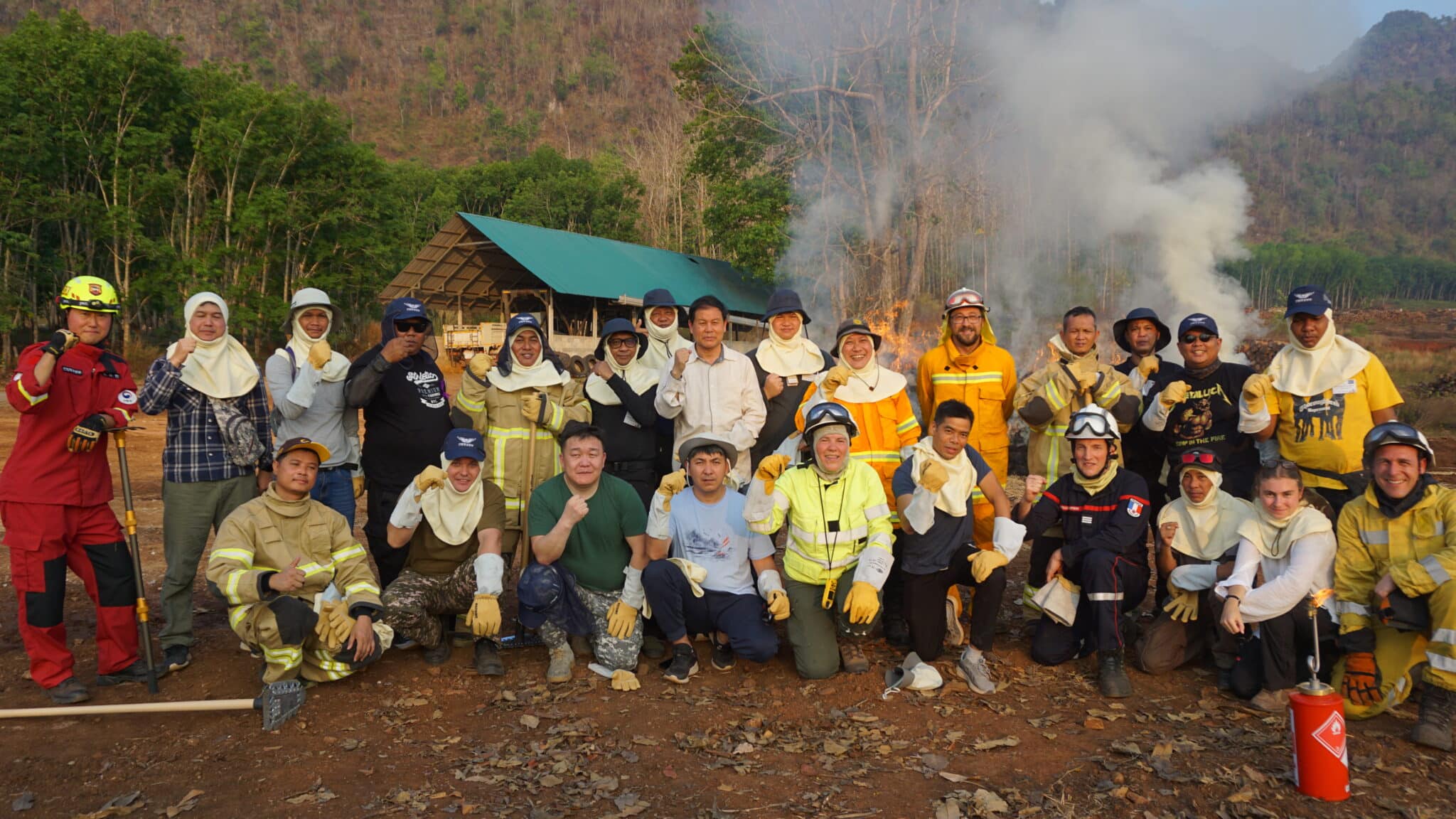
This year’s training builds upon the foundation laid during the Forest Fire Suppression held in March 2023. Doubling the duration, the 2024 training program aims to immerse participants in more extensive burning simulations, offering invaluable hands-on fire suppression experience. To enhance techniques in Fires Behavior Analysis (FBA) and the management of Prescribed Fires, the program is designed to elevate the capabilities of its attendees, preparing them to against forest fires with greater efficiency and expertise.
In a dynamic exchange of knowledge and expertise, the theory education segment of the “2nd Training of Trainers for Forest Fire Suppression” brought together distinguished fire analysis methodologies and strategies from France, Australia, Korea, and Thailand. Each team contributed unique insights into the multifaceted challenge of forest fire management.
French and Australian Insights on Fire Analysis:
The collaborative efforts of the French and Australian experts provided a foundational understanding of Fire Analysis through the fire behavior triangle. Their lectures emphasized three crucial elements: (1) Topography: Understanding its characteristics and influence on fire behavior, (2) Weather: Recognizing its impact on the fire dynamics, (3) Fuel: Identifying types and models to better predict and communicate fire behavior. Notably, the concept of fuel models was underlined as a vital tool for the accurate forecasting of fire spread.
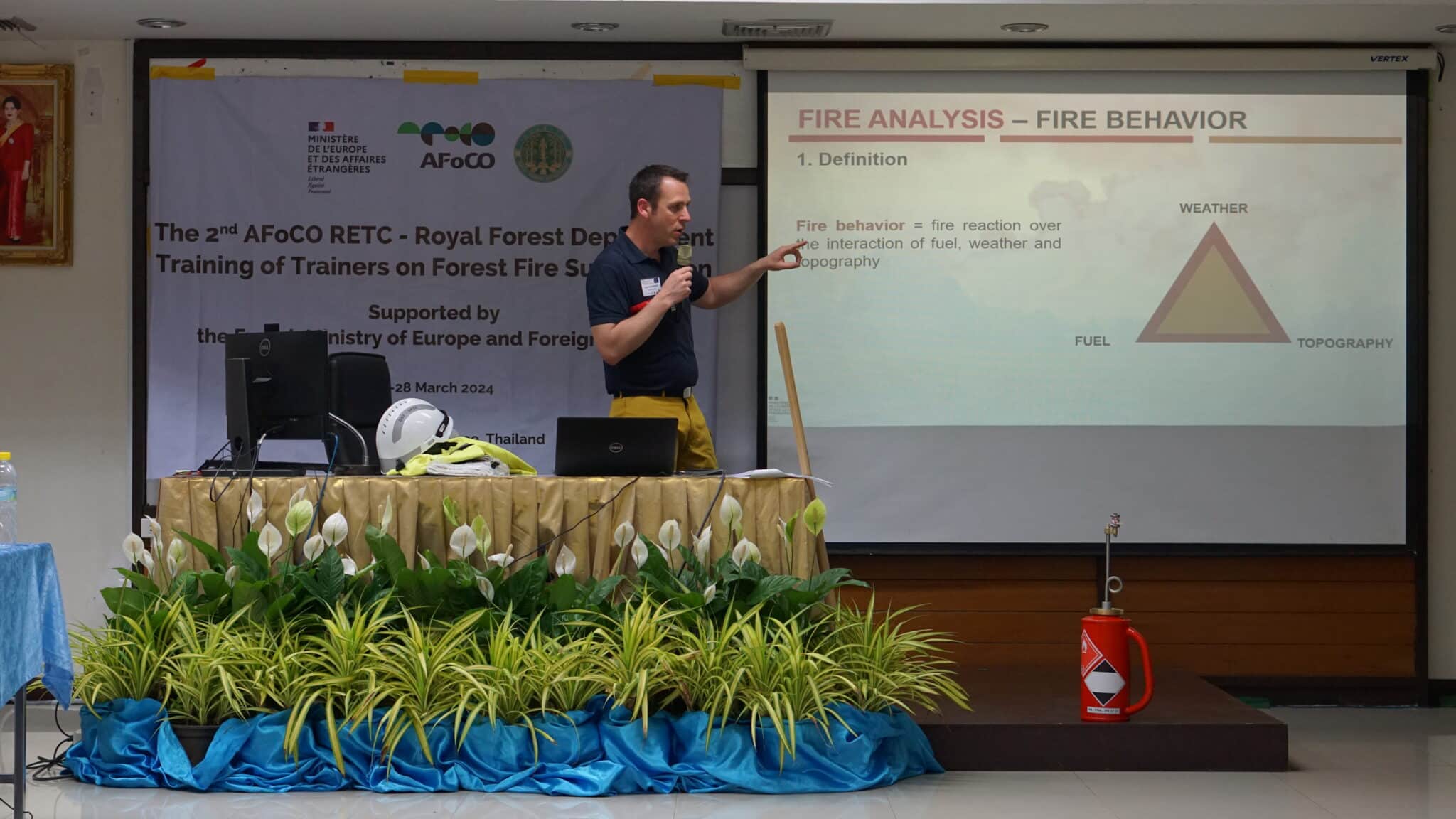

Korean Perspective on Forest Management and Firefighting:
From Forest Aviation Headquarters of Korea Forest Service, introduce to the role of the Forest Fire Agency and local governance in fire response. Highlighted were the four principal missions of the Forest Aviation Headquarters: Forest fire suppression, Transportation of heavy cargo, Control of forest diseases and pests, Mountain rescue operations. The lecture also introduced to the specialized roles within Korean forest firefighting teams, including Rappelers, Engine Crews, and Seasonal Forest Firefighters, delineating their distinct responsibilities and divisions.

Thai Approaches to Fire Suppression and Safety:
The Thai expert contribution focused on Fire Suppression and Control Safety, spotlighting the pivotal LCES System for ensuring operational safety and the empowerment to refuse undue risks. The session also covered the critical 12 WUI (Wildland-Urban Interface) watchouts, equipping participants with strategic awareness for enhanced decision-making. Additionally, there was a practical computer session on smart forest disaster management technologies, focusing on the NASA Fire Information for Resource Management System (FIRMS) & NASA Worldview.
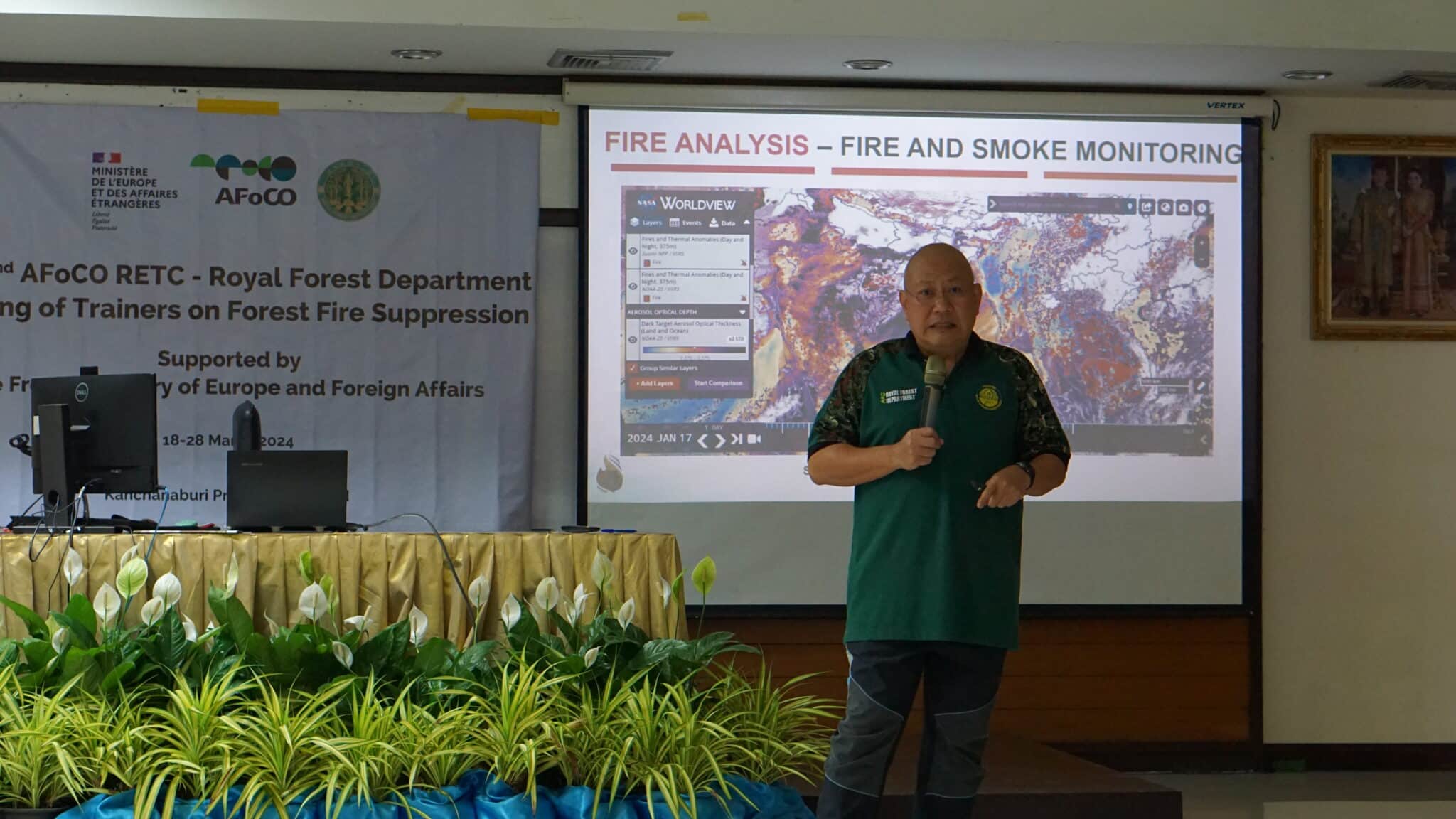
These theory lectures bring together a full range of ideas and hands-on practice, enhancing the learning experience for participants by giving them a worldwide view on how to manage and suppress forest fires.
The “2nd Training of Trainers for Forest Fire Suppression” program offered a hands-on learning section that mixed innovative techniques, ensuring a profound understanding of forest fire behavior and suppression tactics.
Sandbox and Fireline Simulations:
The practical exercise kicked off with an inventive approach to understanding forest fire spread through the use of sandboxes to simulate forest environments. This technique involved creating scaled-down models of forests with sand to demonstrate how forest fires react to various environmental influences. Participants observed firsthand the acceleration of forest fire spread on steep terrains and the expansion of forest fire reach in windy valley terrains. This simulation provided invaluable insights into the dynamics of forest fire behavior in a controlled setting, enhancing the understanding of fire spread principles. In addition to theoretical learning, trainees actively engaged in constructing firebreaks, a critical forest fire control strategy. They practiced using specialized equipment to remove potential fuel from the ground, effectively hindering the advance of forest fires.
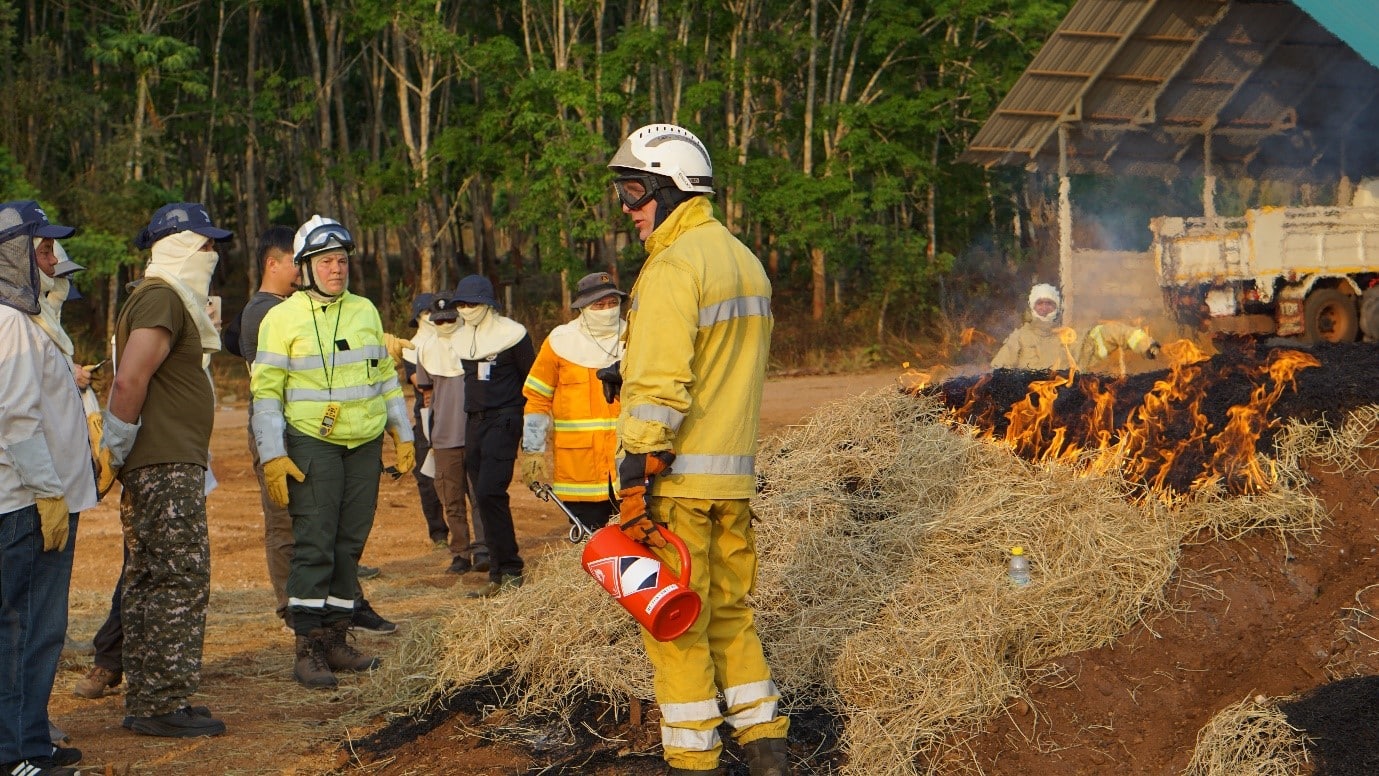

Prescribed Burning and Drone Operation:
The training then transitioned to a more hands-on approach with the initiation of a controlled forest fire in the field, using a fuel torch. This exercise tested the effectiveness of the previously constructed firebreaks in a real scenario, offering participants a direct encounter with forest fire suppression techniques.
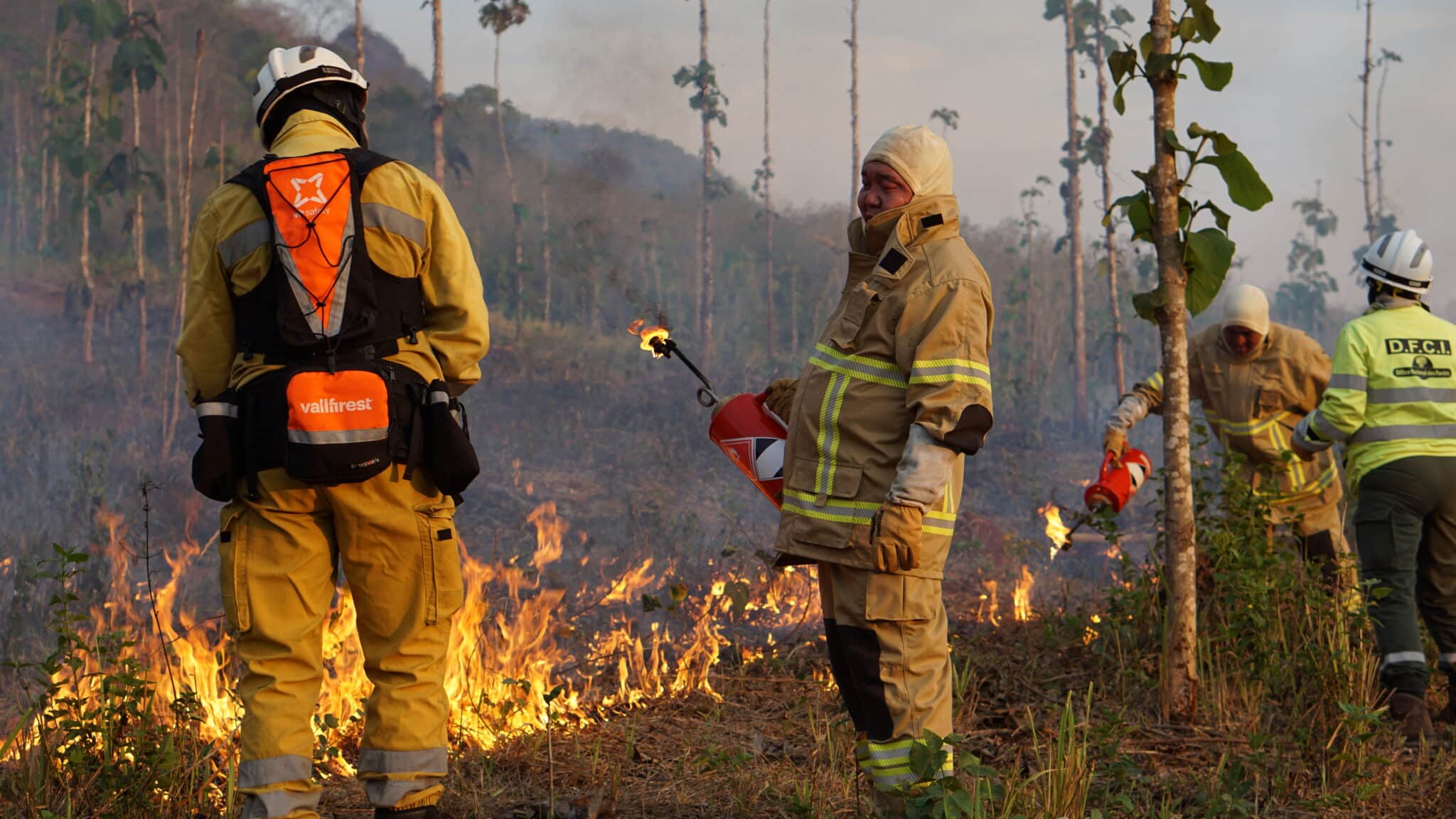
An innovative aspect of the practical training involved the use of drones equipped with thermal imaging cameras, provided by the Korean Forest Aviation Headquarters (FAH). This technology facilitated real-time aerial monitoring of the forest fire scene, allowing participants to gain operational skills in drone technology alongside traditional fire suppression methods. The inclusion of drone operation in the curriculum highlights the evolving nature of forest firefighting techniques, merging traditional practices with cutting-edge technology to enhance forest fire management and response strategies.

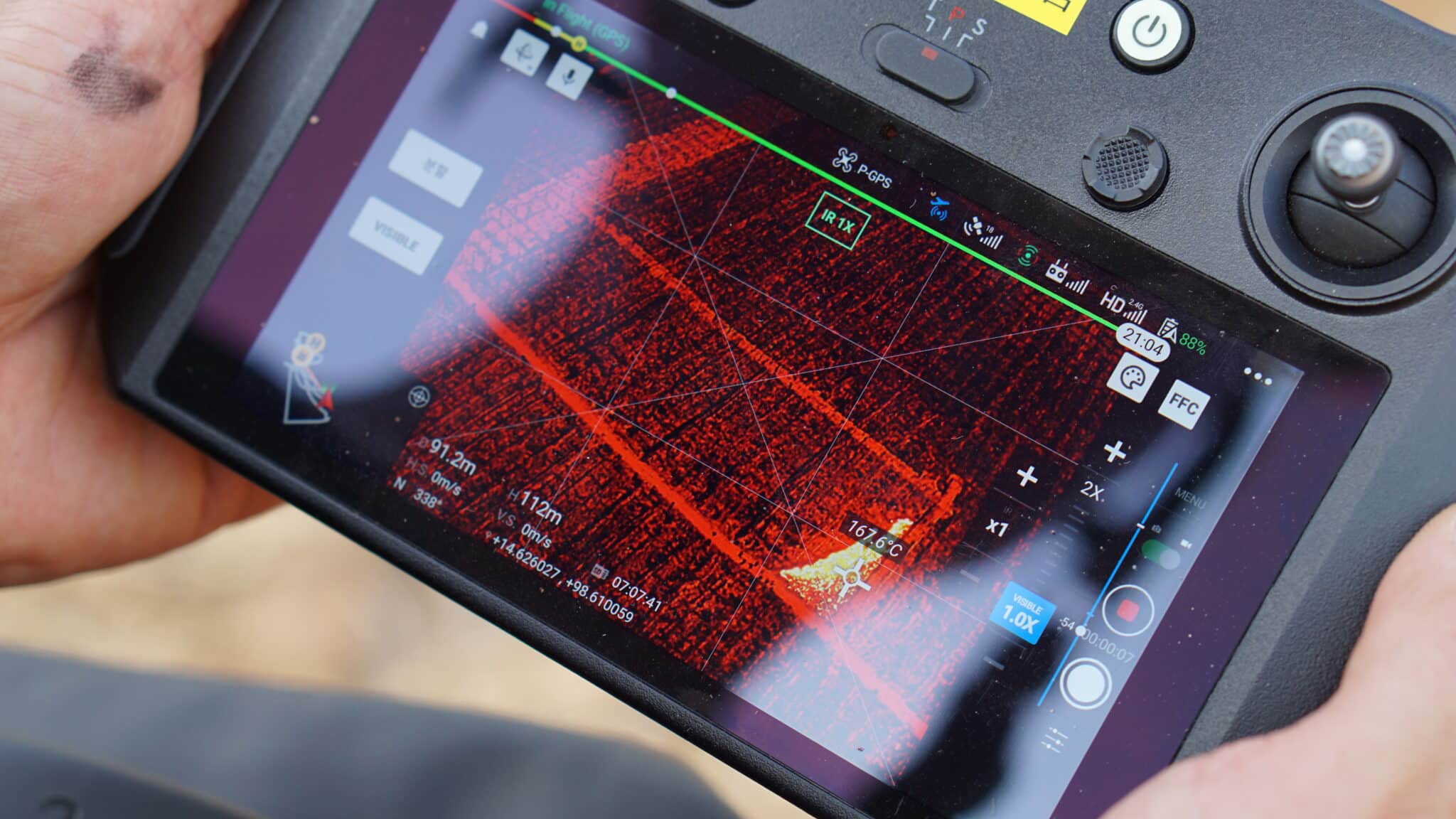
This blend of traditional and modern approaches in the practical exercise segment ensured a comprehensive learning experience, equipping participants with the necessary skills and knowledge to effectively against forest fires.
The “2nd Training of Trainers for Forest Fire Suppression” has successfully concluded, marking a significant milestone in the international effort towards enhanced forest fire management and suppression capabilities. Spearheaded by France and Korea, the training garnered high satisfaction among participants, thanks in part to the integration of advanced forest fire suppression technologies, including innovative firefighting equipment and drone operations. This balanced approach, combining theoretical knowledge with practical applications, afforded participants a unique opportunity to translate classroom theories into real practices effectively.
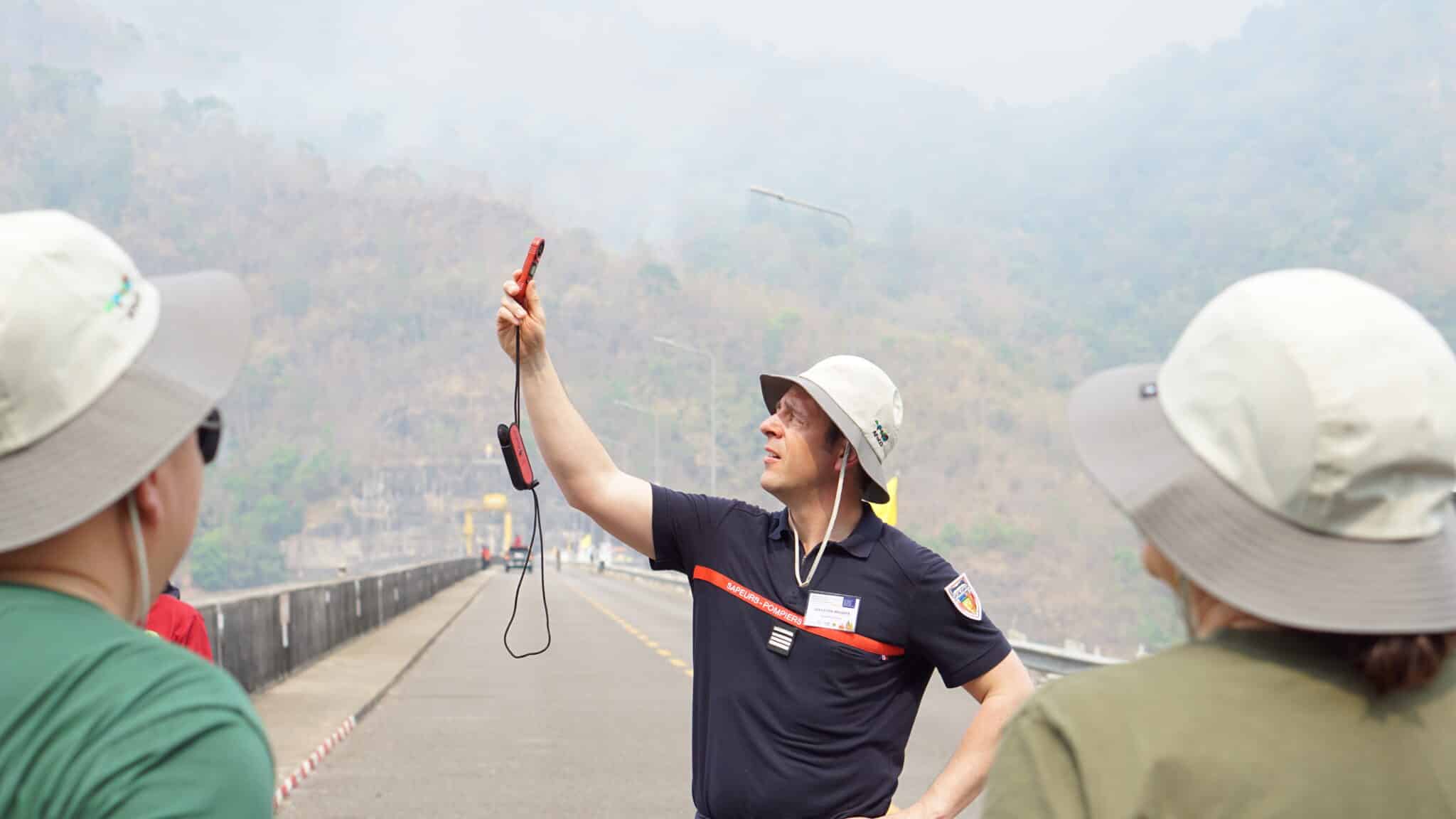
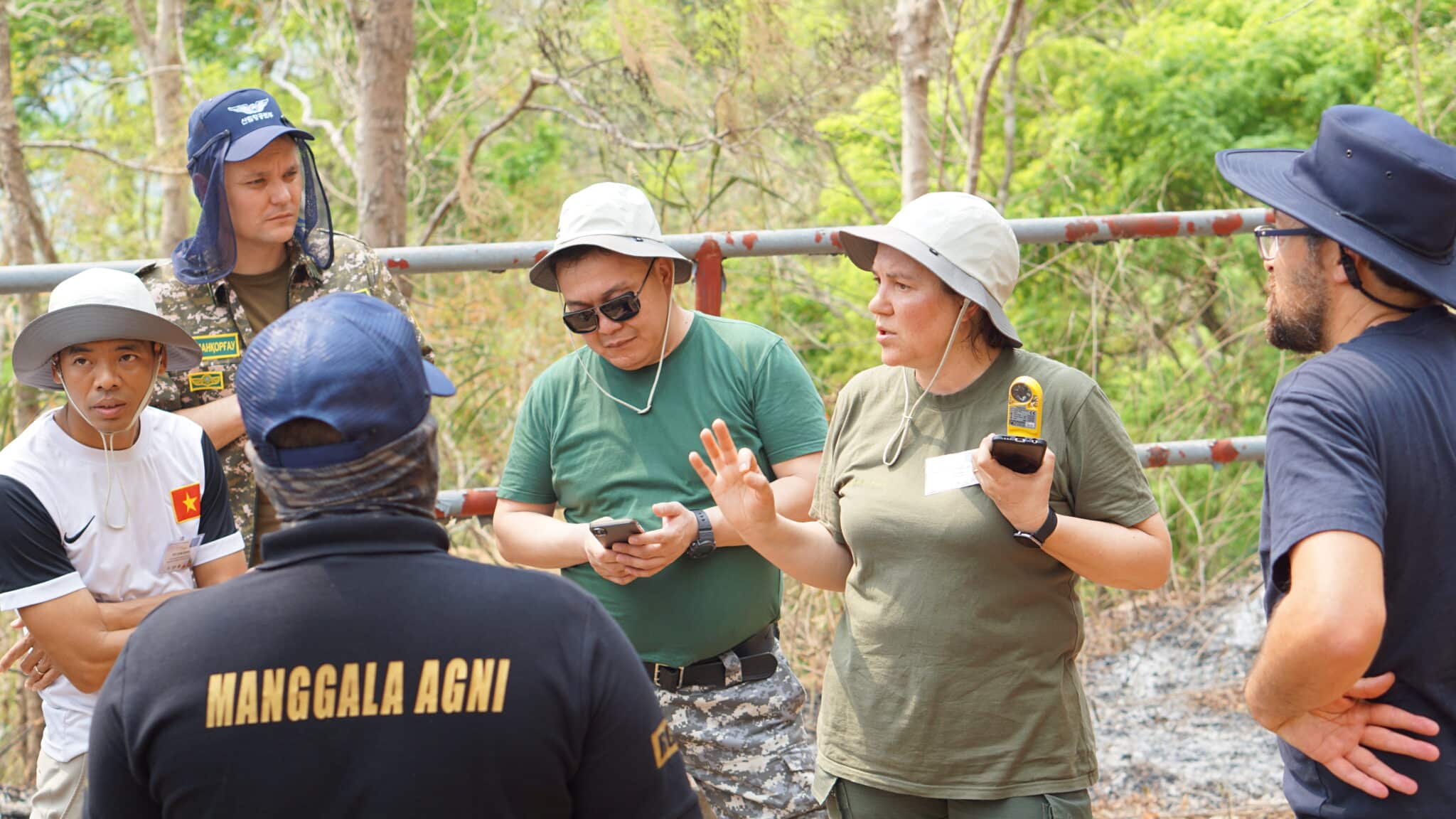
The emphasis on safety throughout the training underscored the commitment to delivering a high-quality training experience, ensuring that all participants could engage fully and safely in the extensive range of activities offered. However, the ambition of the training program extends beyond its current achievements. There’s a recognized need for the development of more nuanced training programs—proposed to be biennial—that cater to varying skill levels among participants. This forward-looking perspective also includes aspirations for the continuous evolution of training programs, leveraging advanced technologies not just in Thailand but also in Korea and France, thus broadening the geographic and technological scope of future training program.
Moreover, the training facilitated a rich exchange of ideas and methodologies among participants, who had the chance to delve into various forest fire suppression techniques suitable for different environmental and meteorological conditions. This exchange was not merely academic; it allowed for the sharing of practical forest fire suppression strategies from across the globe, enabling participants to explore new approaches that might be adaptable to their own countries’ unique challenges.
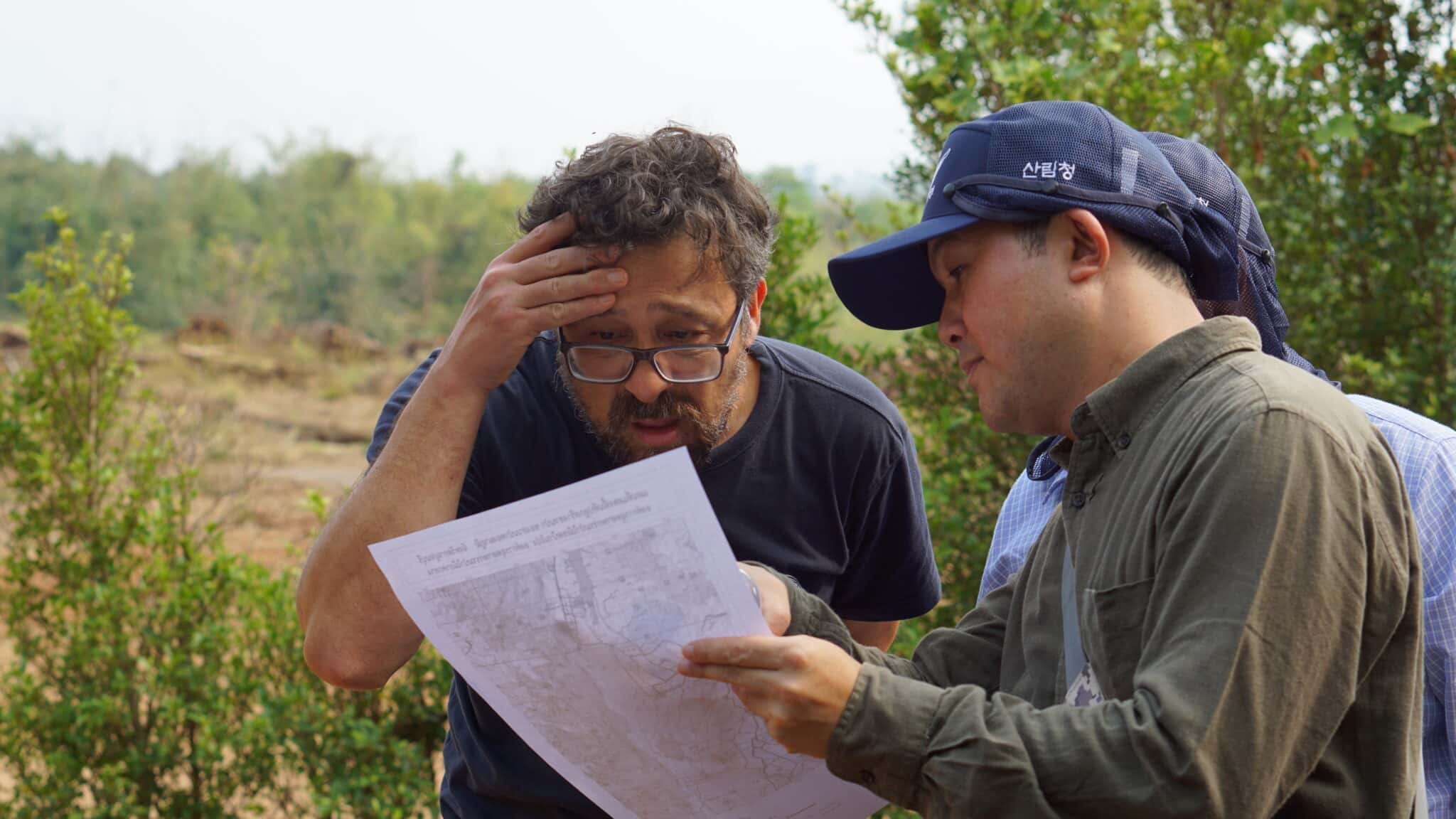
Thailand, as the host country for the second consecutive year, found itself at the critical learning moment, especially with forest fires occurring even within the training site. This coincidence highlighted the urgent need for effective forest fire management strategies in Thailand and underscored the relevance of the training. With a systematic response team already in place, there’s a clear sense of anticipation for the further strengthening of Thailand’s capabilities in forest fire management.
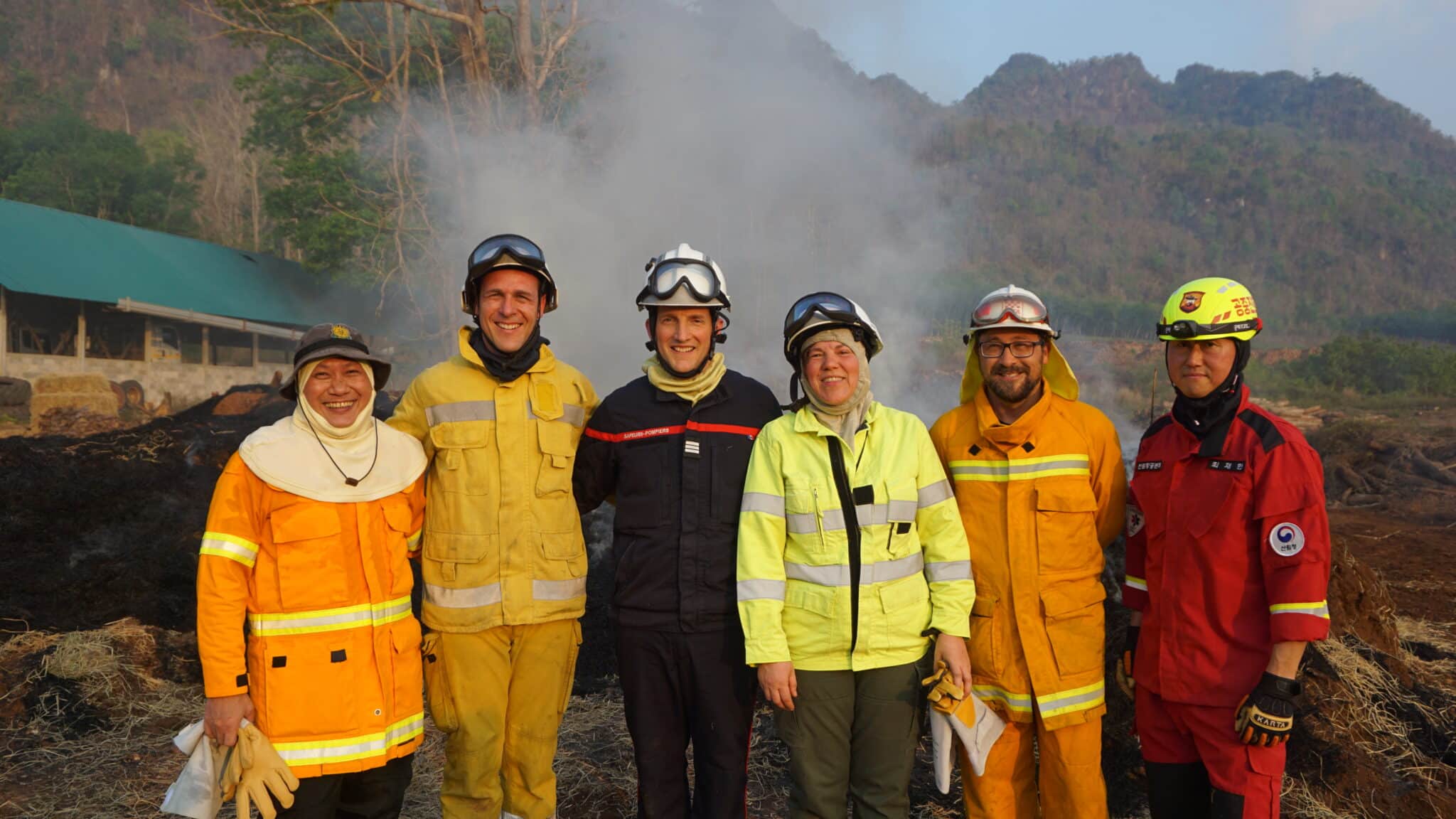
Mr. Musa Kilinc from Australia, and Mr. Choi Jaehan from Republic of Korea
As we look back on the successful completion of this training, it’s clear that the journey towards mastering forest fire suppression is ongoing. The seeds of knowledge and cooperation planted during this session promise to grow into robust strategies and technologies in the fight against forest fires, not only in the participating countries but also in the broader global community committed to safeguarding natural resources and communities from the ravages of forest fires.

Looking back at this training, we see that learning how to fight forest fires is a continuous process. The knowledge and teamwork from this training will lead to better ways and tools to against forest fires, helping not just the countries involved but also the wider world in protecting nature and communities from fire damage.
Contributed by Kiwon Kim, Assistant Program Officer, Capacity-Building & Evaluation Team

